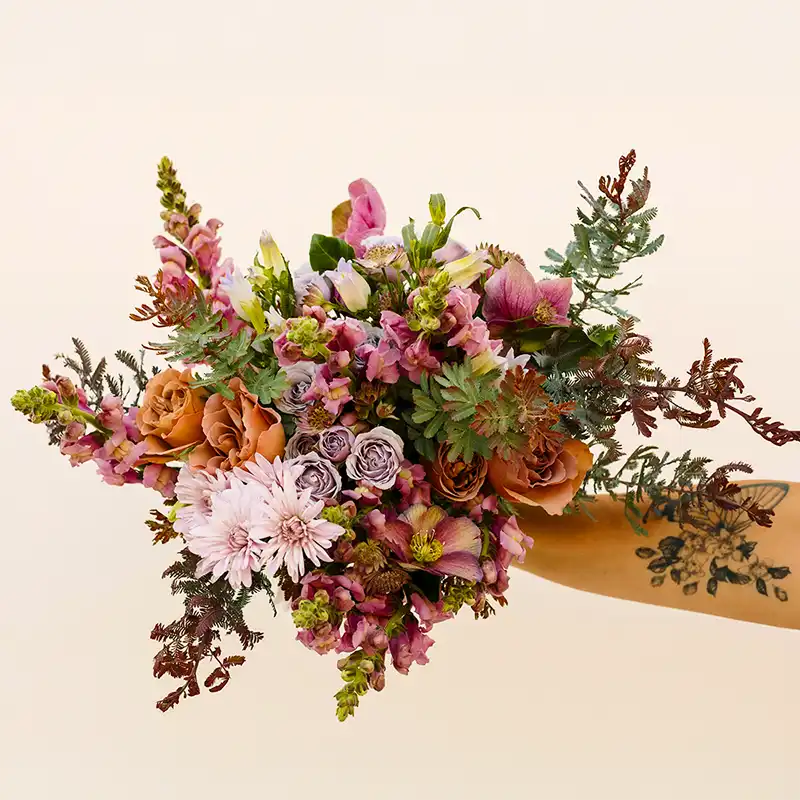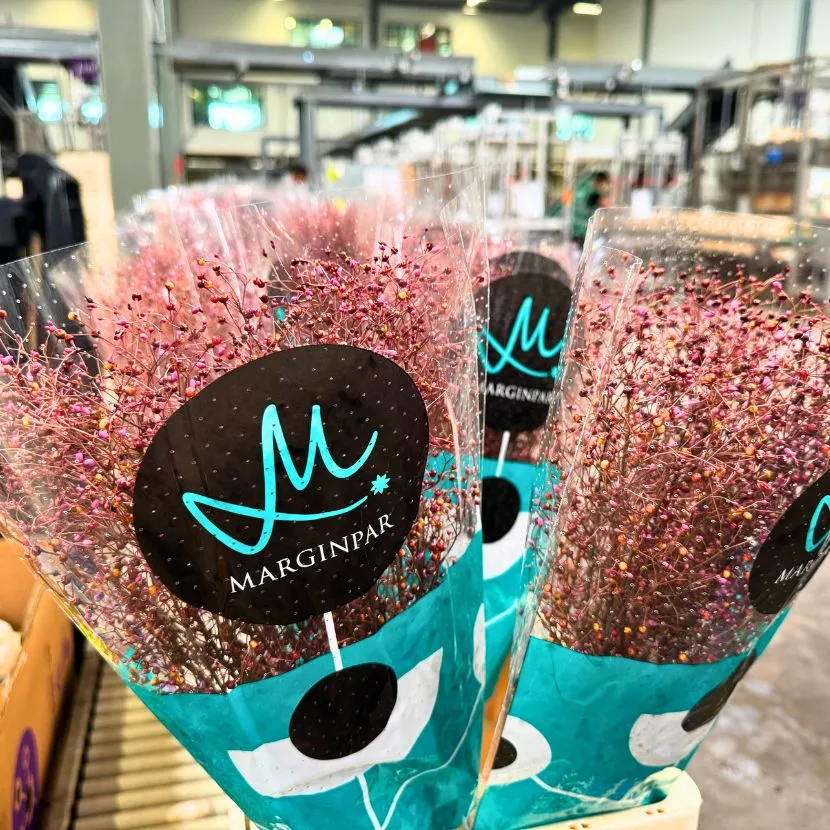With a name just as enigmatic as its very appearance, the sea holly, often called sea eryngo or Eryngium maritimum, is one of the most distinctive and architecturally striking perennials, featuring metallic-blue flowers and a thistle-like appearance. The plant's common name derives from its likeness to traditional holly plants, though it shares no botanical relationship with the familiar, well-known Christmas holly.
This perennial defies conventional expectations of flowering plants; its striking flower heads, typically rendered in shades of steel blue, silver, or purple, emerge from spiky bracts that create an almost otherworldly look. The architectural flowers sit atop sturdy stems that range from modest 30-centimeter heights to towering 3-meter giants, depending on the species. Fascinating as sea holly is, there is a whole lot you would love to know about it.
Understanding the Origins, Native Habitat, and Symbolic Nuances of the Sea Holly
This flowering plant belongs to the Apiaceae family, sharing kinship with familiar plants like carrots, parsley, and celery. Its diverse native habitats span across Europe, the Mediterranean, Asia, Africa, and the Americas. Different species have evolved to thrive in remarkably varied environments, some of which are so harsh: from coastal dunes and rocky outcrops to mountain meadows and prairie grasslands.
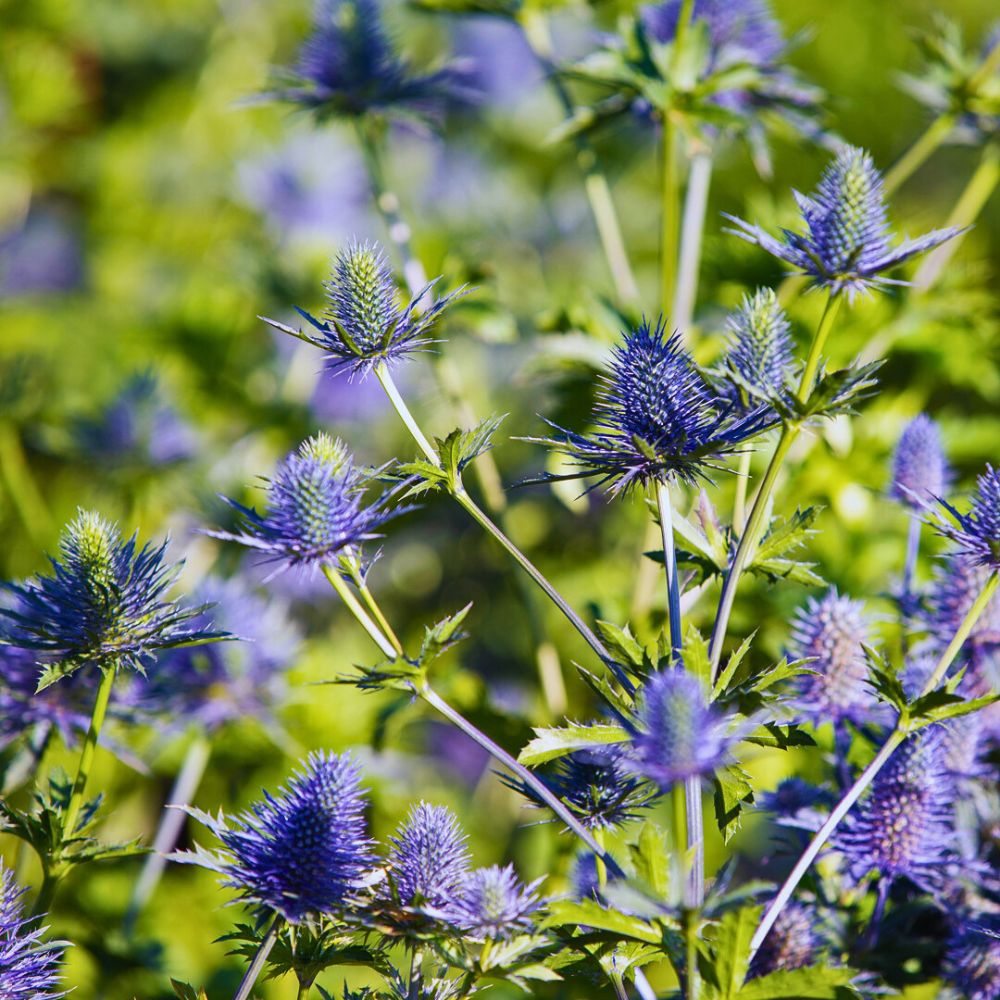
The plant's scientific name, Eryngium, derives from ancient Greek, with scholars tracing its etymology to either ‘eryngion,’ meaning a spiny plant as described by Theophrastus around 300 BC, or ‘eruggarein,’ meaning to eructate, referencing its traditional use in treating digestive disorders. The common name ‘sea holly’ was first recorded in English during the 16th century, when, in his 1548 work, The Names of Herbs, naturalist William Turner stated that Eryngium is called ‘sea Hulver or sea holly' in English. He noted this common English name due to the plant's similarity to holly and its coastal habitat.
The Apiaceae family, in which it belongs, is a fascinating genus of approximately 250 species distributed across temperate and subtropical regions worldwide. The European species, particularly Eryngium maritimum, naturally inhabits sandy coastal areas where it has developed great tolerance for salt spray, drought, and poor soil conditions. This coastal heritage explains much of the plant's resilience and adaptability.
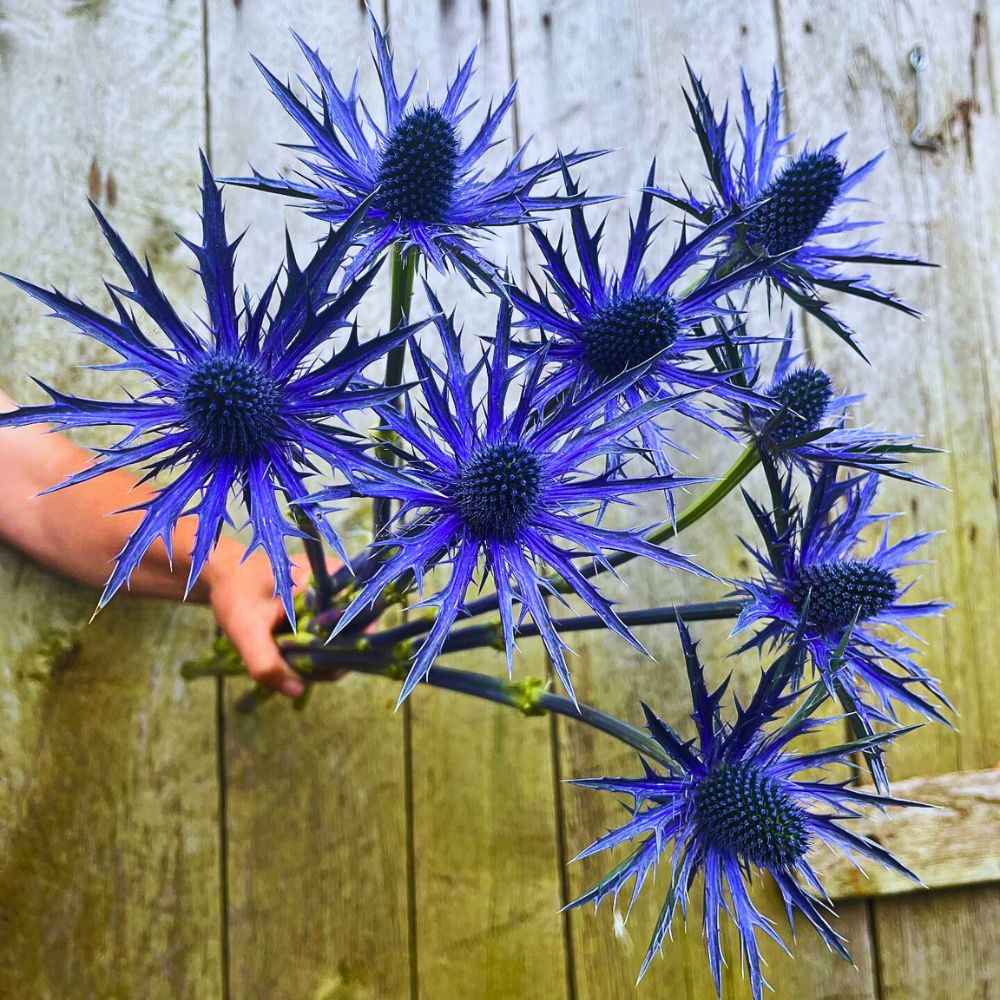
Mediterranean species of sea holly thrive in regions characterized by hot, dry summers and mild, wet winters, developing deep taproots that extend several feet into the soil to access moisture and nutrients. These extensive root systems, while making transplantation challenging, enable the plants to survive in conditions that would defeat many other perennials. The taproot system also explains why established sea holly plants can thrive for decades with minimal care once properly set.
American species, on the other hand, bring their own unique characteristics to the sea holly family, with some native to the Great Plains, where they have adapted to extreme temperature fluctuations and periodic drought conditions. These prairie species often display more robust growth habits and can reach impressive heights; thus, they are valuable for creating dramatic focal points in large-scale landscape designs. The diversity of native habitats creates a range of forms, sizes, and characteristics within the sea holly group, providing varied options suitable for virtually any climate, garden style, and floral designs.
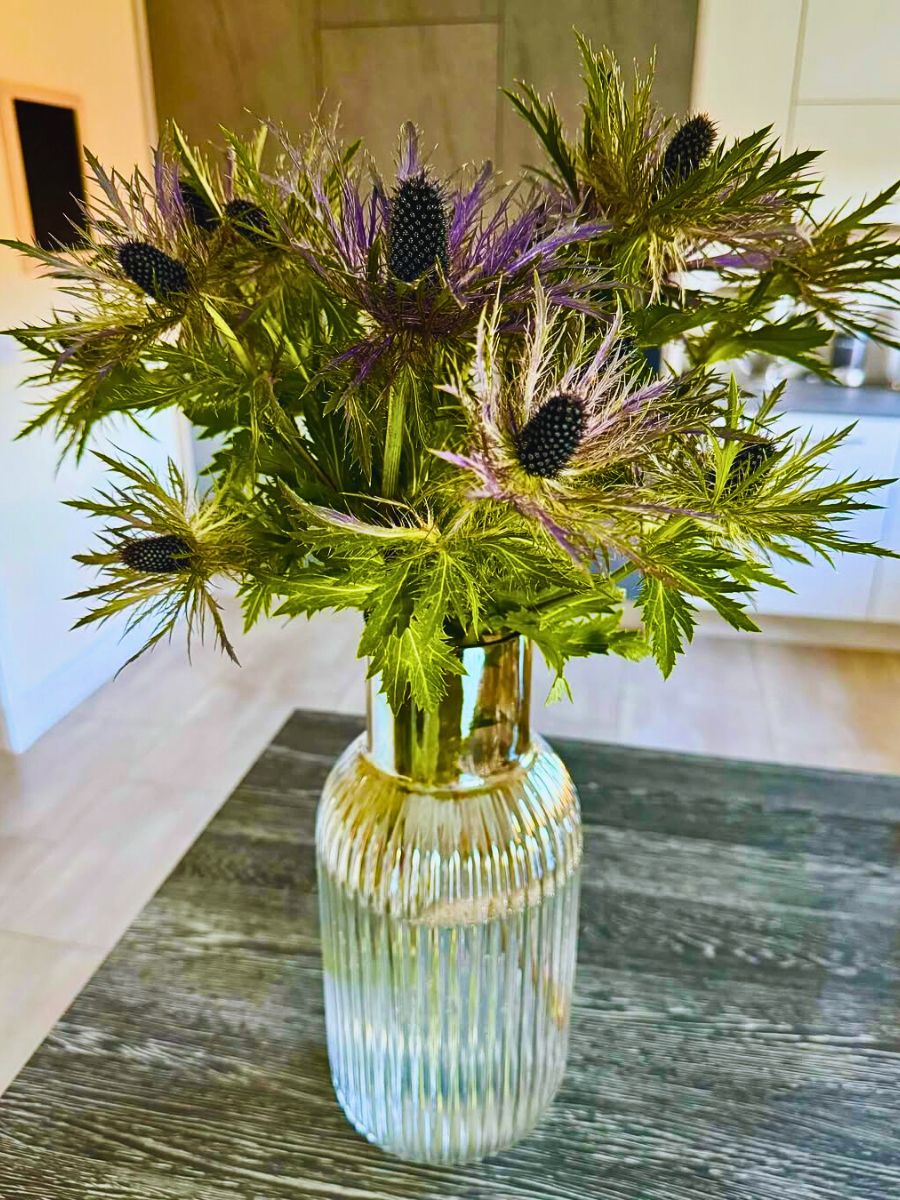
In the language of flowers, sea holly has accumulated rich symbolic meanings that mirror its distinctive appearance and hardy nature. Its association with protection and defense, for instance, stems from its spiky, armor-like appearance, leading to its use in folk traditions as a protective charm. Medieval European cultures valued sea holly for its supposed ability to ward off evil spirits and negative influences, often incorporating it into ceremonial arrangements and protective gardens. Elizabethans also believed the plant's roots possessed aphrodisiac properties; thus, their use in confections called ‘kissing comfits.’
The resilience and persistence of sea holly also make it a symbol of endurance and strength in adverse conditions. This symbolism echoes particularly strongly in contemporary contexts where environmental challenges and climate change make drought-tolerant, low-maintenance plants increasingly valuable. Its ability to thrive in poor conditions while maintaining its beauty could mean triumph over adversity.
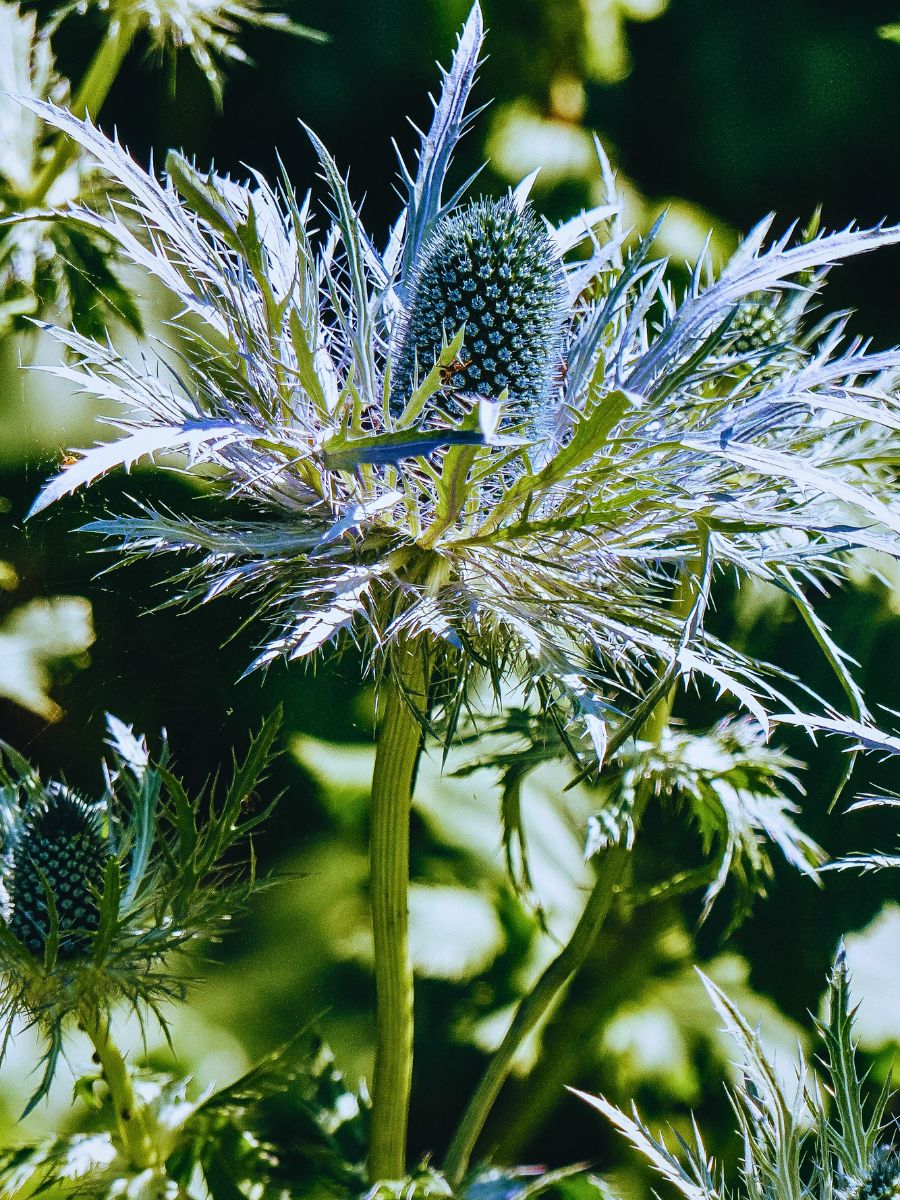
In modern gardening, sea holly embodies sustainability and environmental consciousness, representing the movement toward more naturalistic and ecologically appropriate planting schemes. Its value to pollinators and wildlife enhances its meaning related to conservation and biodiversity support. Plus, the plant's ability to thrive in harsh coastal conditions makes it a symbol of resilience and endurance, while its unique beauty signifies the value of individuality.
Physical Characteristics, Distinctive Appearance, and Climatic Conditions’ Hardiness
An architectural perennial, the sea holly typically reaches heights of 60 centimeters, though some varieties get considerably taller. The plant forms distinctive clumps with spreading habits, often creating arresting visual displays. Its leaves are among its most distinctive features, emerging pale green in spring but changing to a striking silver-blue color as the season progresses. The foliage, characteristically spiny, with thick, leathery texture and prominent white veins, creates elaborate patterns.
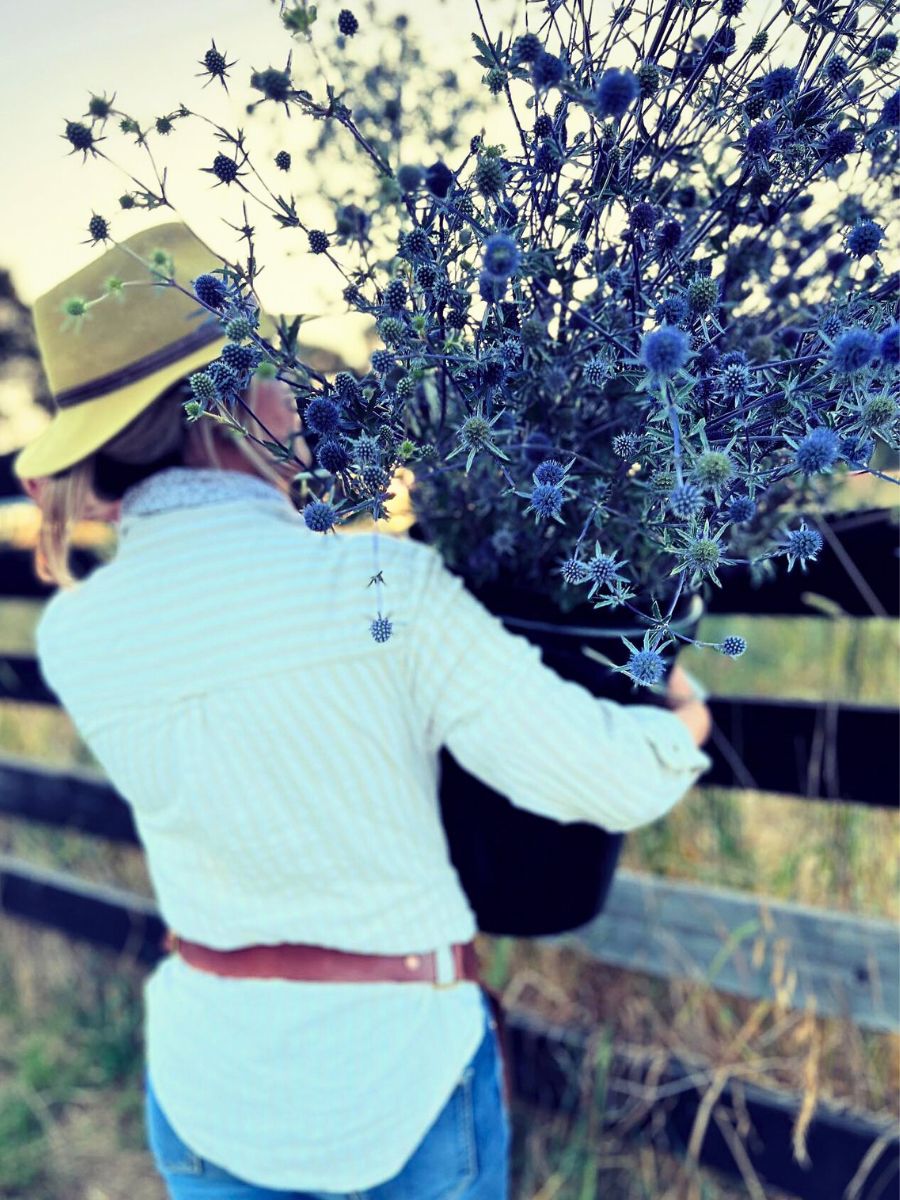
The flowers are, perhaps, the plant's utmost glory. Blue sea holly varieties produce cone-shaped flower heads that resemble thistles, appearing in brilliant shades of blue, from pale silvery-blue to intense cobalt, though white varieties also exist, and are surrounded by dramatic collars of spiky bracts. The flowering period extends from June through September, with peak flowering occurring in midsummer.
Bearing remarkable adaptability to diverse climatic conditions, this perennial thrives in USDA hardiness zones 4a through 9b, tolerating a range of temperature extremes. However, for optimal growth, it prefers temperatures between 15.56°C and 26.67°C (60°F and 75°F). Its exceptional drought-tolerance makes it ideal for xeriscaping and low-water gardens, as it actually prefers periods of drought to consistently moist conditions.
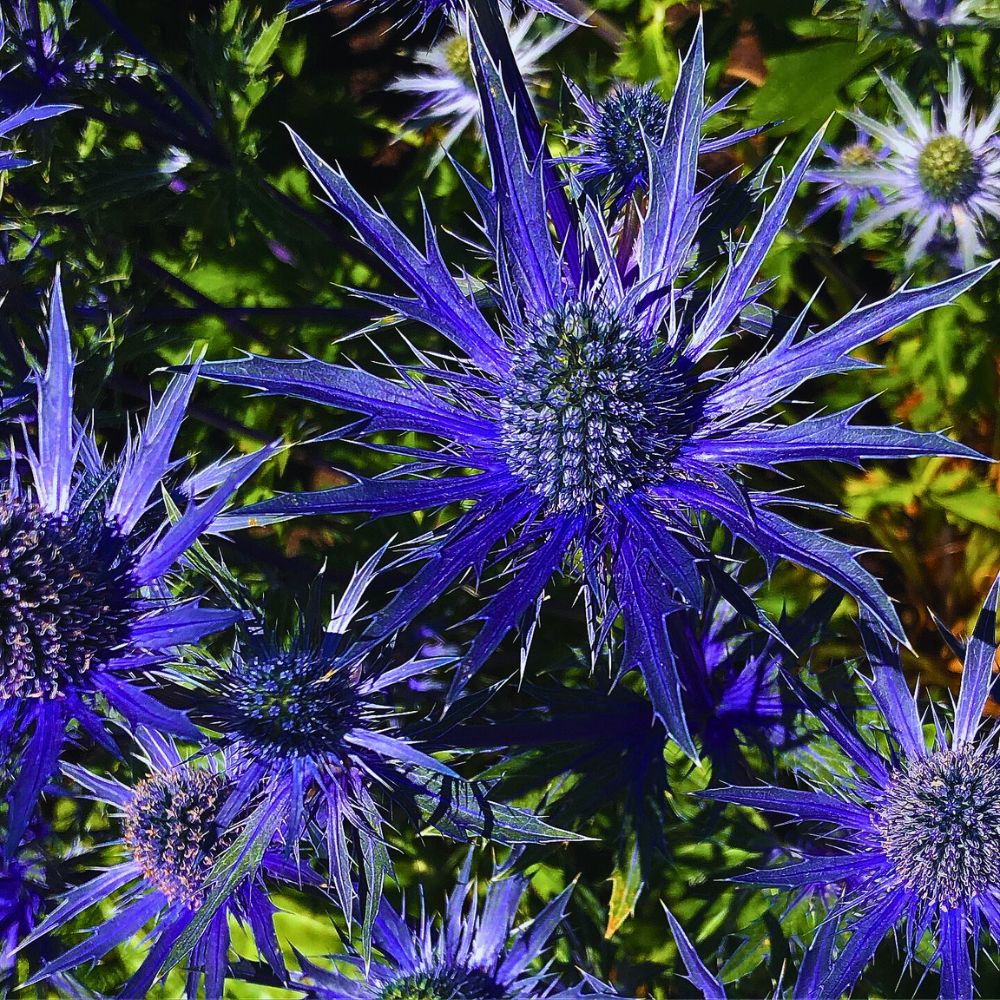
Sea Holly Varieties and Color Variations
The distinctive blue sea holly varieties are among the most sought-after varieties within the Eryngium genus, valued for their intense coloration that intensifies under bright sunlight. Eryngium planum, commonly known as flat sea holly, produces compact clusters of small, intensely blue flowers that contrast against the plant's silver-green foliage. This species typically reaches heights of 60-90 centimeters and adapts well to various cultivation conditions.
Eryngium alpinum, the alpine sea holly, produces some of the most spectacular blue sea holly displays with large, deeply cut bracts surrounding the flower heads in shades ranging from steel-blue to deep purple-blue. This variety epitomizes the aristocrat of the sea holly family, though it can be more challenging to establish than some of its more common relatives. Its dramatic size and flower head intensity make it a prized variety for collectors and designers seeking maximum visual impact.
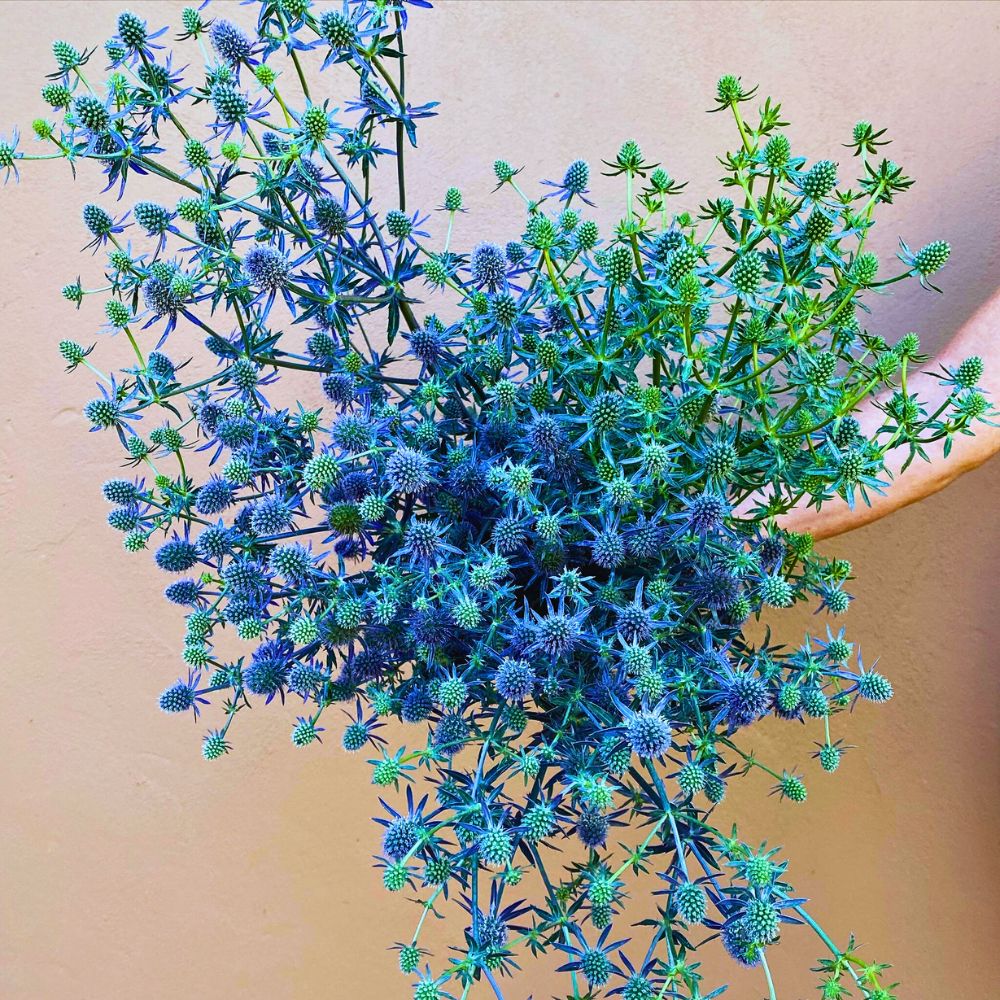
Just so you know, the intensity of blue coloration in blue sea holly varies significantly based on growing conditions, with plants receiving full sun exposure developing the most vivid colors. The sunnier the location, the more intense the color of the plant parts. This relationship between light exposure and color intensity allows growers to influence the final appearance of their plants. Also, modern breeding has produced numerous cultivars of the blue sea holly with enhanced color intensity, improved performance, and varying heights.
Sea Holly Cultivation, Growing Techniques, and Care
Successful sea holly cultivation begins with proper seed starting or plant establishment methods. Start with proper soil preparation, ensuring excellent drainage while avoiding overly rich conditions. If growing from seed, remember that sea holly requires a cold stratification period that mimics natural winter conditions for successful germination. The seeds should be sown in autumn or early spring, either directly in the garden or started indoors for better control, though direct seeding in late autumn often produces better results than spring sowing, as the seeds receive natural stratification through winter weather conditions.
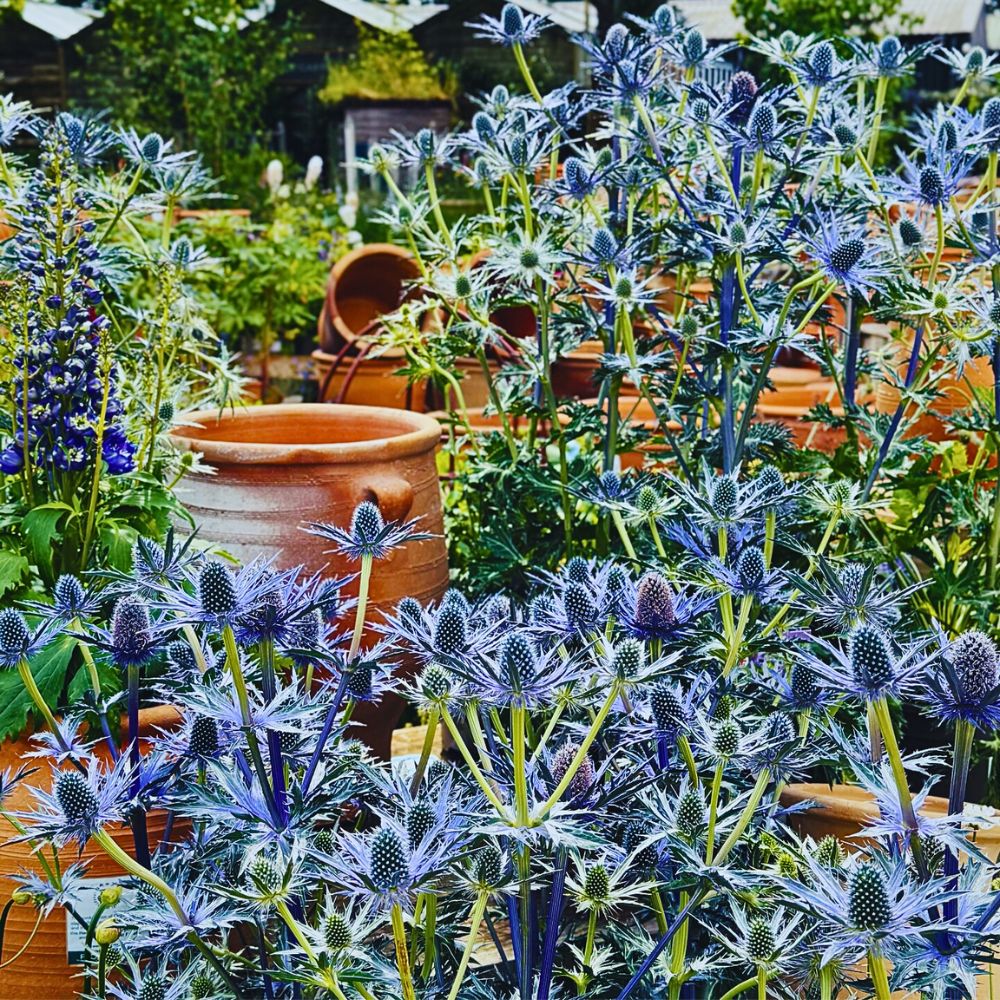
After, they should be kept slightly warm and moist for the first 2 to 4 weeks, and thereafter, the cultivars should be exposed to cool temperatures of 0 to 3°C for 4 to 6 weeks. When planting established plants, choose the location carefully as they develop a deep taproot and resent transplanting. Grow them at 13-16°C (55-60°F) and avoid temperatures above 21°C (70°F), spacing the plants 45-60 cm (18-24 inches) apart to allow for their mature spread. Young plantlets need careful attention to watering. While they require consistent moisture during establishment, they can be damaged by overwatering or waterlogged conditions.
Once established, sea holly requires minimal ongoing care, making it an ideal choice for low-maintenance cultivation; it is relatively care-free when it catches the rhythm. Plus, the flowers do not require much in the way of watering except during long droughts, while its natural adaptation to poor soil conditions also means fertilization is generally unnecessary and may, actually, reduce flowering performance while promoting excessive vegetative growth.
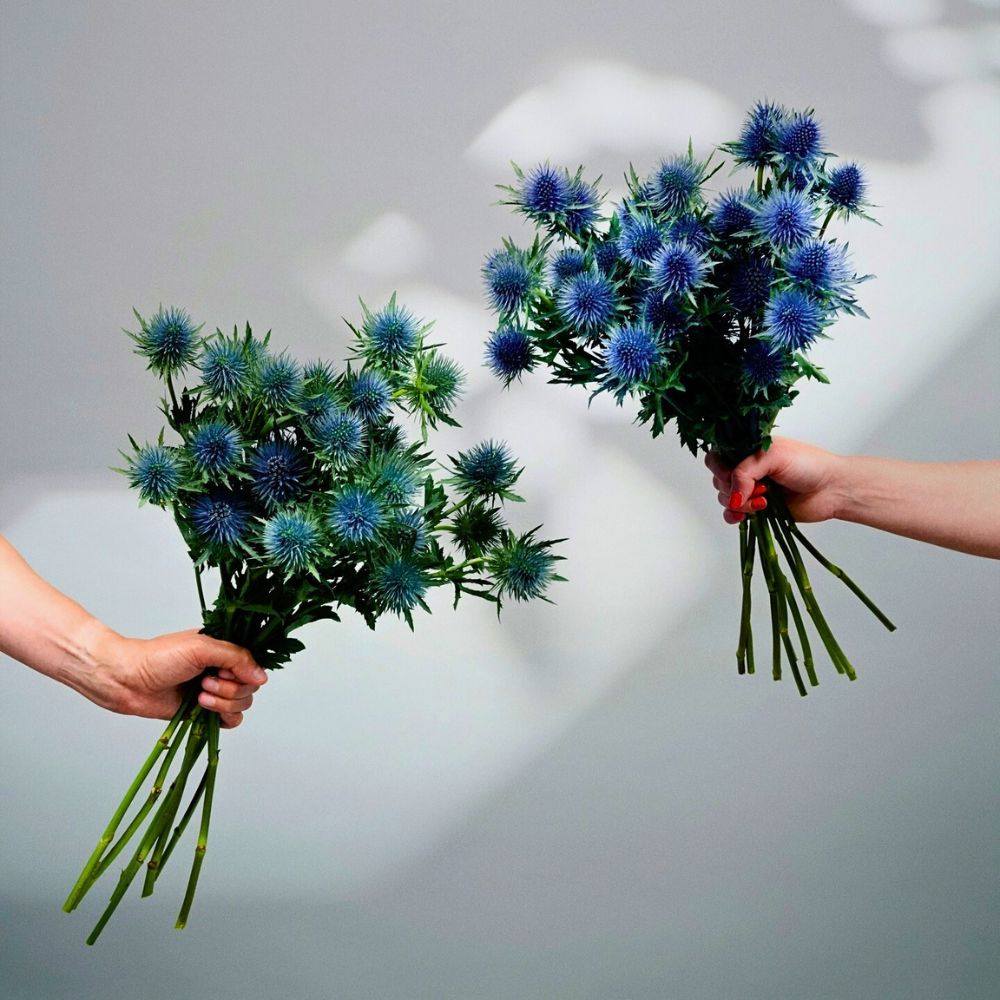
Still, however, one should water the plants regularly during the first growing season to establish the root system, then reduce watering, because this plant often performs better with less water than more. Deadheading and pruning spent flowers is essential to encourage continued flowering throughout the season, and also manage the plant's overall appearance. In autumn, after maturity, you can either remove the flower stems or leave them for winter interest and bird food. The dried seed heads provide excellent winter structure in the garden. The dried seed heads are perfect for dried flower arrangements.
Also noteworthy is that when growing it, sea holly pairs beautifully with other drought-tolerant, sun-loving plants like lavender, Russian sage, and ornamental grasses. Its other suitable companions include sedum, catmint, and colorful coneflowers. Its architectural structure often offers an excellent contrast to the soft, flowing texture of the grasses and the other plants.
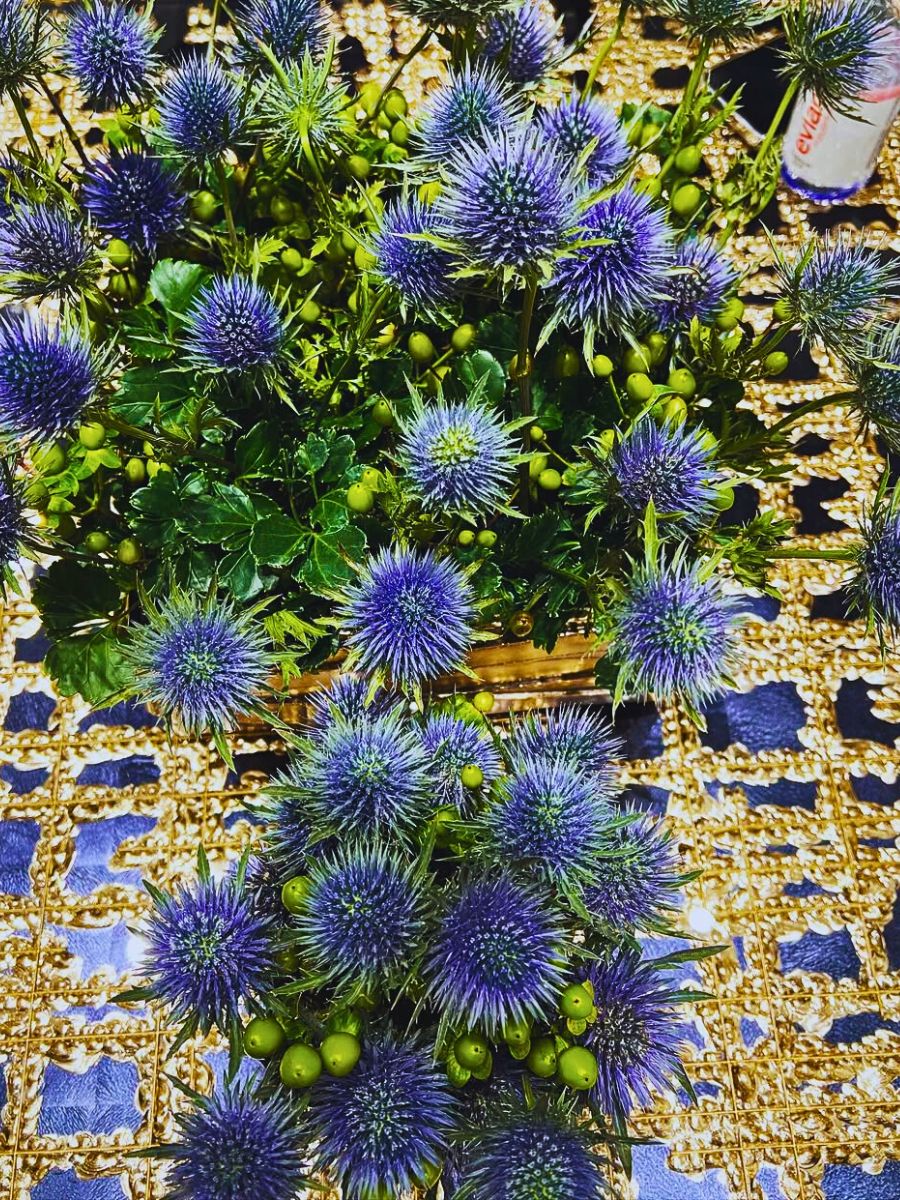
Where Is the Best Place to Plant Sea Holly?
If you're wondering where the best place to plant sea holly is, its successful growing largely depends on site selection and soil conditions. Determining the best place to plant the sea holly, therefore, requires understanding the plant's essential requirements for successful establishment and long-term growth. They need plenty of sunshine and free-draining soil. They can tolerate poor soil, and a spot at the foot of a wall is a good position as the soil will remain dry over winter. The ideal location for sea holly should provide full sun exposure for at least six hours daily, though the plant can tolerate partial shade, though, with reduced flowering intensity. The more sun this plant receives, the more intensely colored the blue flowers will be.
Soil, likewise, plays a crucial role in successful sea holly cultivation. While the plant tolerates poor soil conditions, it requires excellent drainage to prevent root rot and other moisture-related problems. The sea holly is far more likely to succumb to waterlogged conditions than to drought stress. This is why they prefer sandy soil. Heavy clay soils should be amended with coarse sand, gravel, or other drainage-improving materials before planting.
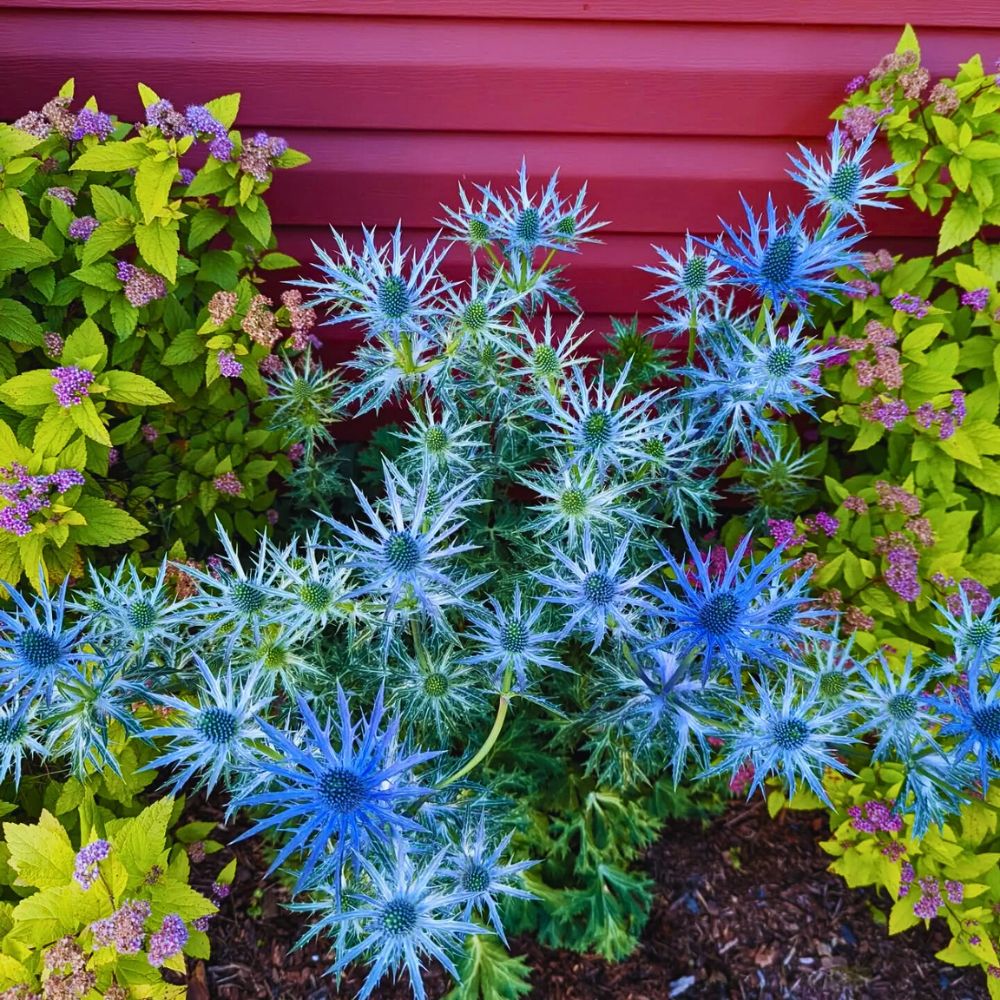
Furthermore, the permanent nature of the plant’s placement deserves special consideration due to its extensive taproot system. As a tap-rooted plant, it transplants poorly and is best left undisturbed once established. This means initial site selection is important since moving established plants proves difficult and often unsuccessful. For gardening purposes, therefore, consider planting in rock gardens, gravel gardens, or coastal-themed plantings where its natural habitat preferences can be accommodated.
Does Sea Holly Die in Winter?
One of the most frequently asked questions about sea holly concerns its winter behavior. Does sea holly die in winter? The answer depends largely on the specific species and local climate conditions. But most sea holly varieties exhibit semi-evergreen characteristics rather than complete dormancy. So, sea holly will not completely die back in winter since it is semi-evergreen. In colder climates, the leaves will likely brown and have winter damage; however, new healthy leaves will emerge in spring.
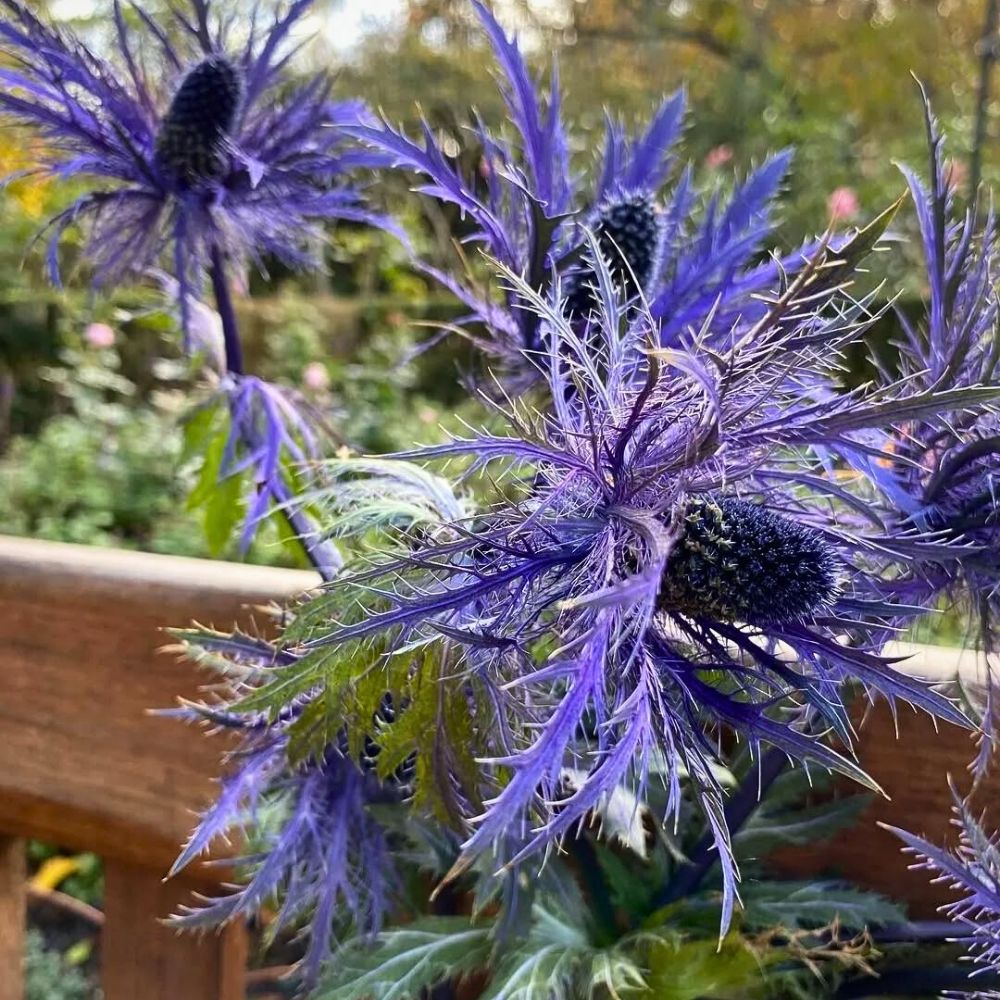
Also, the extent of this winter dieback depends on several factors, including temperature extremes, soil moisture, and exposure to cold winds. In regions with severe winters, most sea holly varieties will die back above ground, sending up new growth in mid to late spring. This natural process is completely normal and should not cause concern. This winter behavior reveals their adaptation to diverse climatic conditions.
In milder regions, many species maintain attractive basal rosettes of foliage throughout the winter months. In areas experiencing harsh winters with prolonged freezing temperatures, the aerial portions of the plant may suffer damage and die back partially, though the robust root system remains dormant underground, ready to revive new growth when spring arrives. Understanding the sea holly’s winter behavior, therefore, helps make informed decisions about design and maintenance schedules.
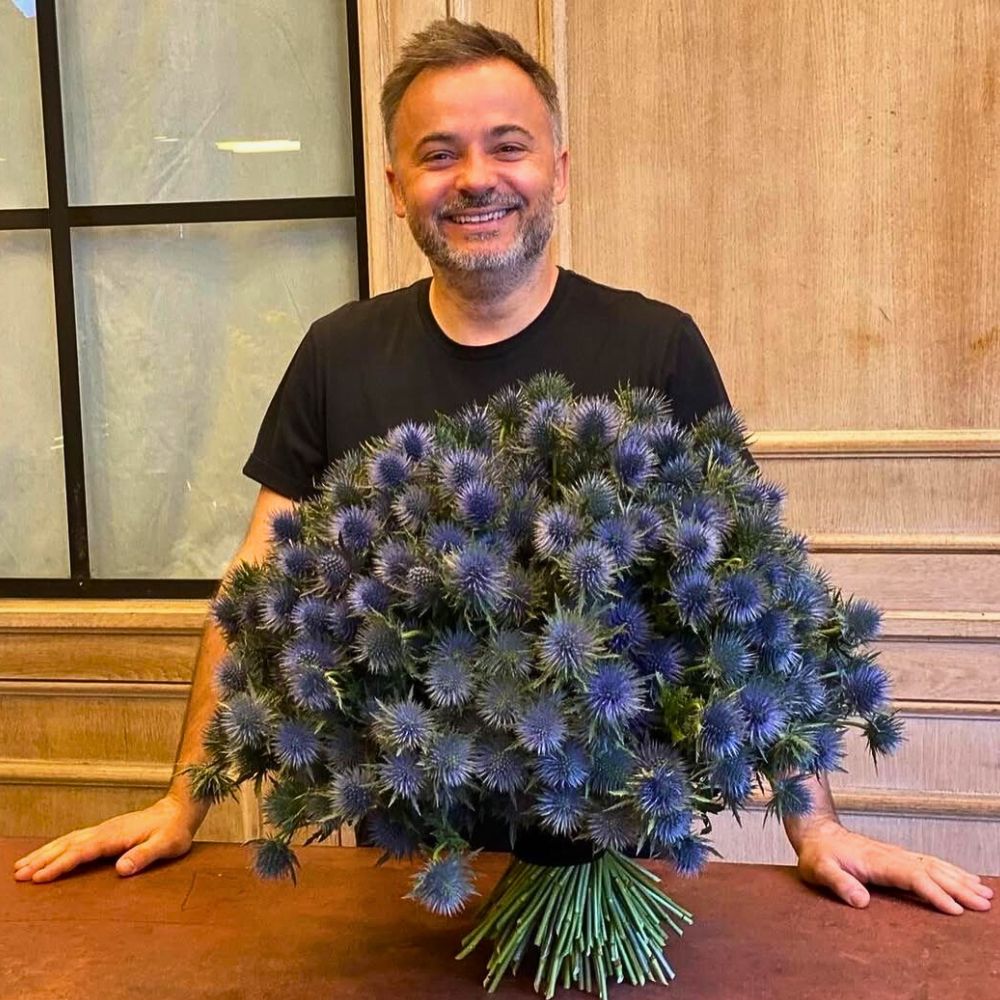
What Is Sea Holly Good For?
When one asks, “What is the sea holly good for?” often the answer tells of the versatility of this exceptional perennial outside its obvious ornamental design value. Historically, various species of sea holly have been used for medicinal purposes, with the roots of some species being harvested for their purported therapeutic properties. Traditional European herbalism valued certain Eryngium species for their anti-inflammatory, diuretic qualities, and for treating digestive disorders. The plant has also been employed in folk medicine for respiratory ailments and as a general tonic.
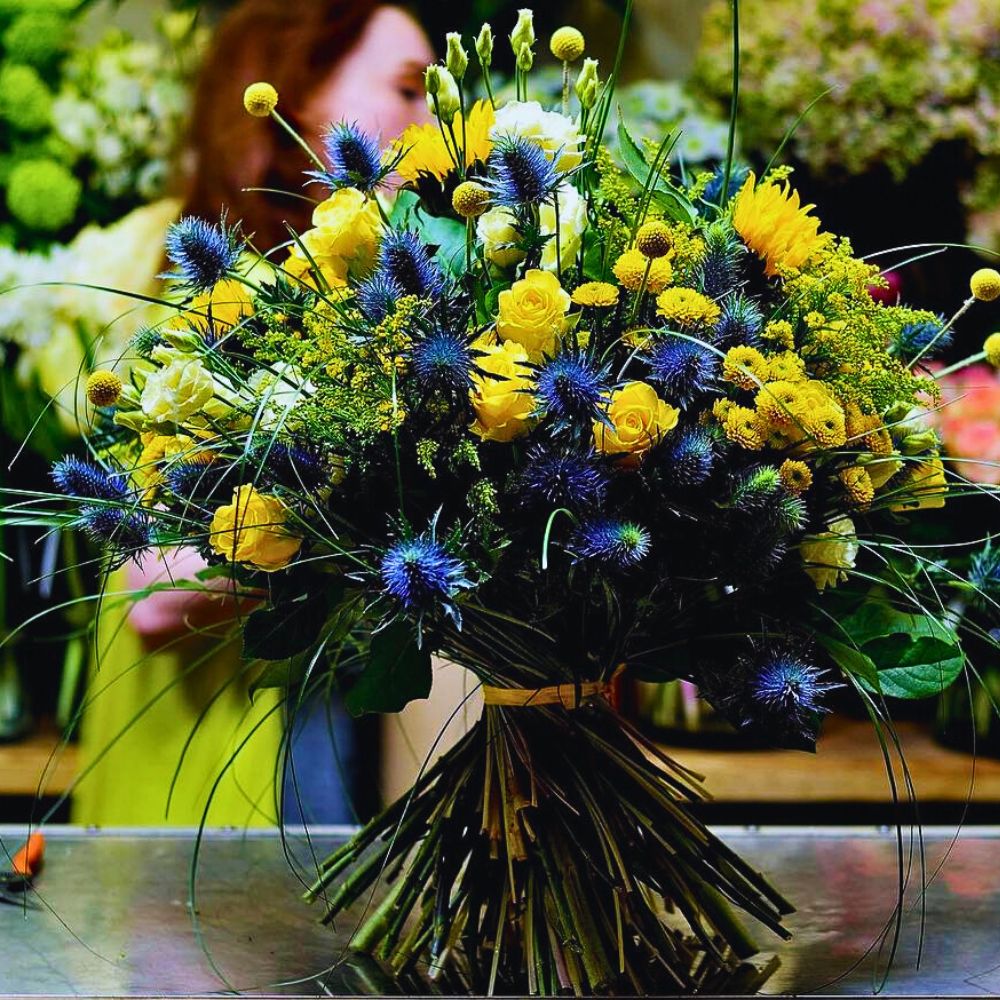
Modern gardeners and commercial growers like Marginpar, however, primarily value the plant for its landscape, ecological, and floral design benefits. In gardening, sea holly provides exceptional architectural interest with its sculptural form and unique texture. It shines as a specimen planting, in perennial borders, or as part of contemporary naturalistic plantings. For wildlife enthusiasts, it is an important pollinator plant, attracting bees, butterflies, and beneficial insects throughout its flowering period. In fact, it is one of the most important insect plants in the garden in midsummer.
Sea Holly in Floral Design
In floral design, sea holly has gained great popularity for both fresh and dried arrangements. The distinctive flower heads maintain their form and color exceptionally well when fresh or dried, making them valued by florists and designers as a cut flower for both fresh and dried designs. The sturdy stems and long-lasting flowers make them excellent additions to bouquets, while the seed heads can be harvested and dried for permanent arrangements that maintain their color and form for periods.
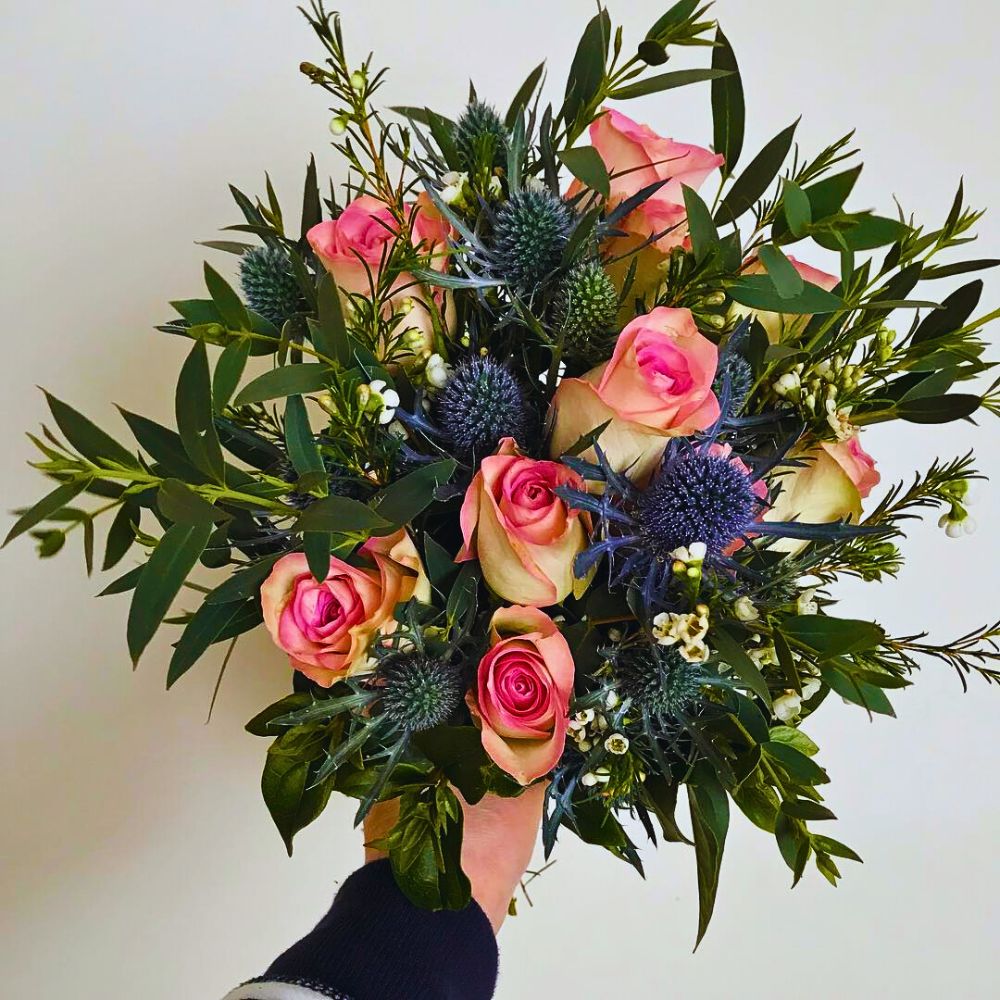
As an increasingly popular element of contemporary floral design, sea holly’s architectural qualities provide structure and visual interest that complement softer, more traditional flowers. Its flower head’s metallic sheen creates striking contrasts when paired with roses, peonies, or other garden favorites, while the spiky texture adds dynamism to arrangements. Also, florists love it for its exceptional vase life and ability to maintain its form and color long after cutting. The sturdy stems rarely require additional support, and the flowers seem to keep developing and maturing even after cutting, often intensifying in color over the first few days in the vase. This makes them particularly valuable for events where durability is crucial.
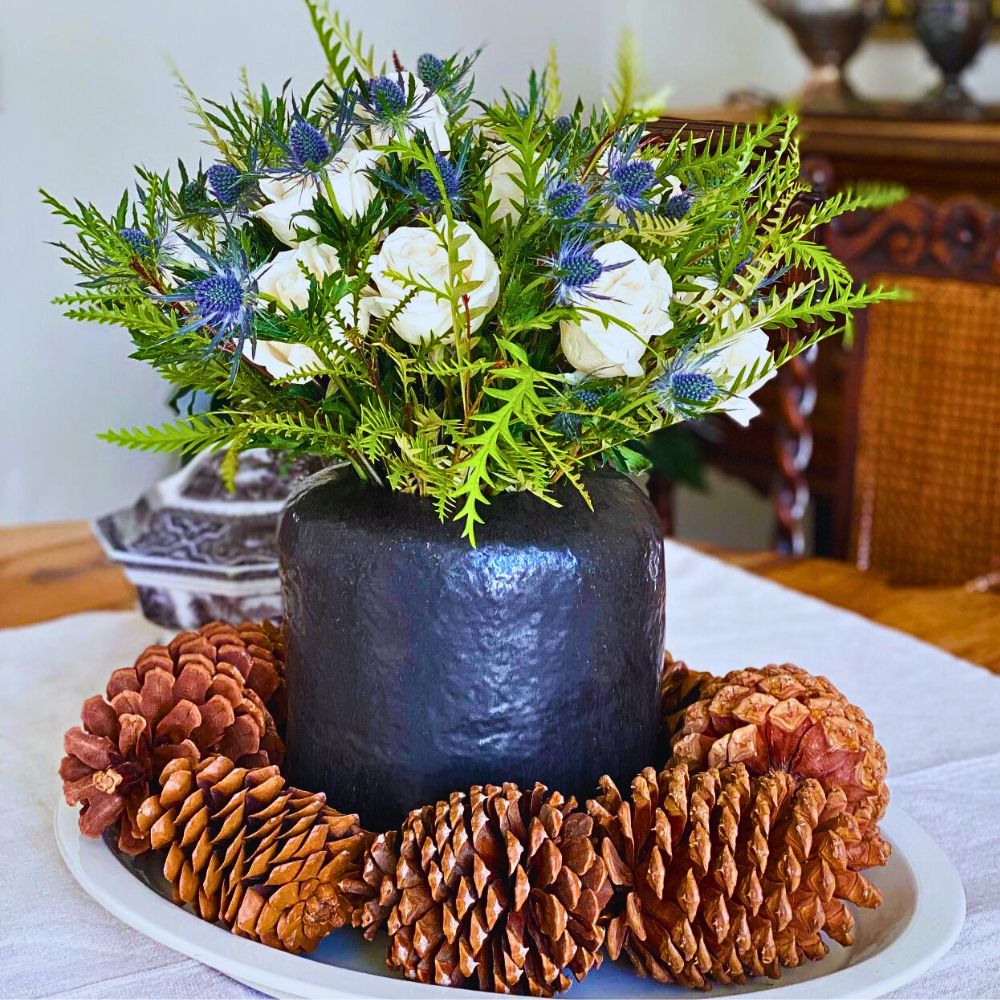
The sea holly is also versatile in both fresh and dried applications, with the same stems serving dual purposes throughout their lifecycle. Fresh arrangements benefit from their striking appearance and perfect qualities, while the natural drying process preserves the form and much of the color for lasting displays. This evolution occurs naturally and gradually, allowing arrangements to evolve over time. If you’d therefore want something unique in your designs, perhaps you could try the sea holly.
Feature image by @blackstoneflowerfarm. Header image by @eatfresh_forage_and_find




